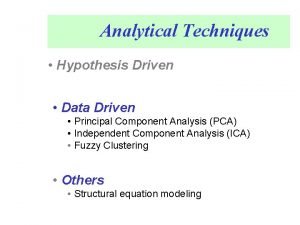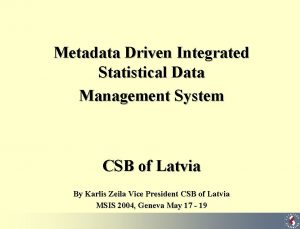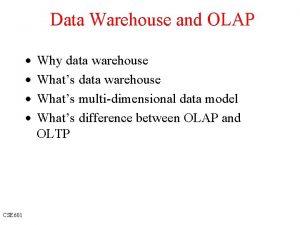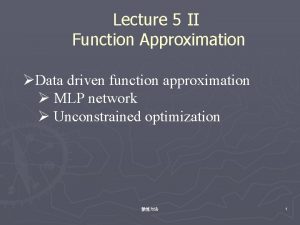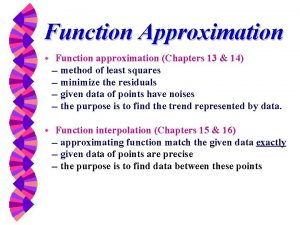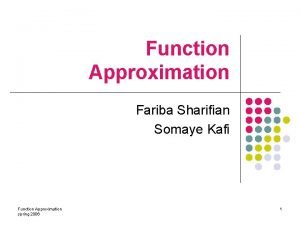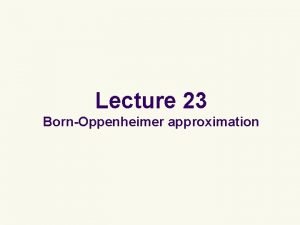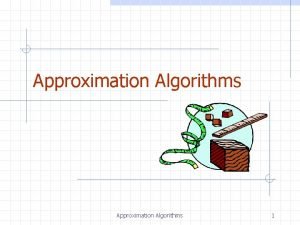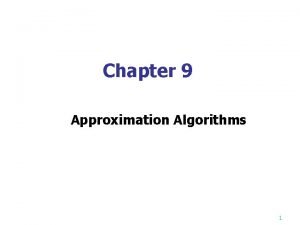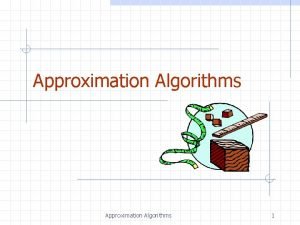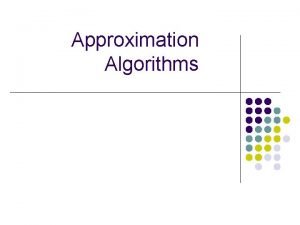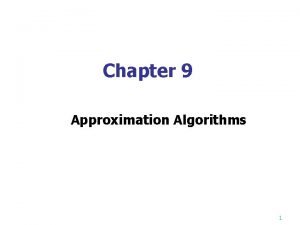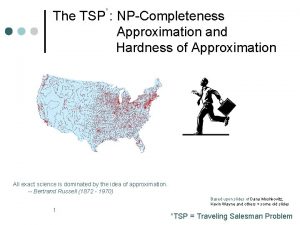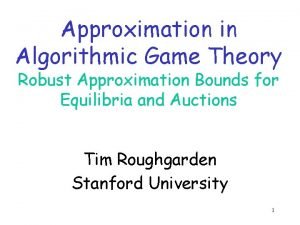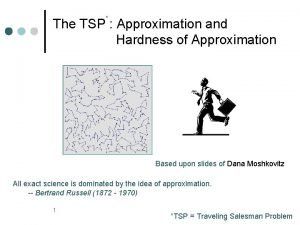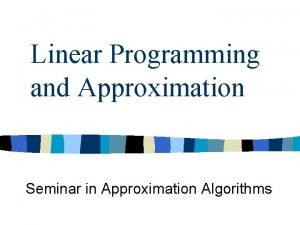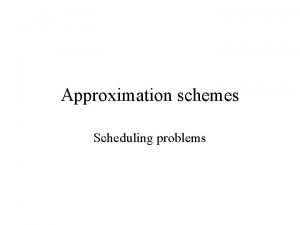Lecture 5 I Function Approximation Data driven function















![Data structure ► a=[a 1 a 2 a 3 … a M] ► b=[b Data structure ► a=[a 1 a 2 a 3 … a M] ► b=[b](https://slidetodoc.com/presentation_image_h2/6cebccd75d2819aff9a2c8a64ed8e65a/image-16.jpg)





- Slides: 21

Lecture 5 I Function Approximation ØData driven function approximation ØProjective hyper-tangent function 數值方法 1

Interpolation vs approximation ► Polynomial interpolation § Constraints: f(xi)=yi for all I ► Polynomial approximation § Minimization of mean square error ► Non-polynomial approximation § Minimization of mean square error 數值方法 2

Data Driven Function Approximation ► Input § Paired data ► Output § An approximating function ► Requirement § Minimization of mean square error 數值方法 3

Approximating function f: a mapping realized by weight sum of hyper-tangent functions 數值方法 4

Why weight sum of hyper-tangent functions ? ► With only linear combination, the approximating function is linear 數值方法 5

Install NNSYSID 1. Install 2. Download The NNSYSID Toolbox learn_MLP By Levenberg Marquardt method 3. Set path to recruit the directory where NNSYSID. zip is extracted 數值方法 6

Example fa 1 d. m x tanh(x+2)+sech(x) Black box y observation Create paired data DDFA One tanh 數值方法 7

Single tanh x h=ax+b tanh(h) r Approximate tanh(x+2)+sech(x) by single tanh 數值方法 8

Example fa 1 d. m x tanh(x+2)+sech(x) Black box y observation Create paired data DDFA two tanh functions 數值方法 9

Two weighted tanh functions 1 x b 1 tanh b 2 a 1 r 2 a 2 tanh 數值方法 10

Approximate tanh(x+2)+sech(x) by two tanh functions 數值方法 11

Multi-Layer Perceptrons (tanhs) 1 x INPUT LAYER b 1 tanh b 2 a 1 r 2 a 2 tanh HIDDEN LAYER 數值方法 OUTPUT LAYER 12

Example fa 1 d. m x sin(x)+sech(x) Black box y observation Create paired data DDFA two tanh functions 數值方法 13

Approximate sin(x)+sech(x) by five tanh functions 數值方法 14

MLP Network 1 x b 1 tanh b 2 a 1 tanh a 2 b. M ……. a. M tanh r 1 r 2 r. M+1 1 數值方法 15
![Data structure aa 1 a 2 a 3 a M bb Data structure ► a=[a 1 a 2 a 3 … a M] ► b=[b](https://slidetodoc.com/presentation_image_h2/6cebccd75d2819aff9a2c8a64ed8e65a/image-16.jpg)
Data structure ► a=[a 1 a 2 a 3 … a M] ► b=[b 1 b 2 b 3 … b. M] ► r=[r 1 r 2 r 3 … r. M+1] 數值方法 16

MLP evaluation ► Given x, a, b and r, find 數值方法 17

Procedure: MLP evaluation 1. 2. 3. 4. Input r, a, b and x, M y=r(M+1) Set M to the length of a For m=1: M a. Add r(i)*tanh(x*a(i)+b(i)) to y 5. Return y 數值方法 18

y=eval_MLP(x, r, a, b, M); M=length(a) y=r(M+1) exit for m=1: M Add r(i)*tanh(x*a(i)+b(i)) to y 數值方法 19

Function approximation Given Find a parametric function that minimize 數值方法 20

Problem statement Given Minimize 數值方法 21
 01:640:244 lecture notes - lecture 15: plat, idah, farad
01:640:244 lecture notes - lecture 15: plat, idah, farad Api driven ddi
Api driven ddi Data driven instructional cycle
Data driven instructional cycle Verizon%20vehicle
Verizon%20vehicle Research problems in data warehousing
Research problems in data warehousing Ddd education
Ddd education Data driven web applications
Data driven web applications Data driven robotics
Data driven robotics Data driven fraud detection
Data driven fraud detection Data driven powerpoint
Data driven powerpoint Data driven messaging
Data driven messaging Hypothesis driven data mining
Hypothesis driven data mining Metadata-driven data management
Metadata-driven data management Query driven approach in data warehouse
Query driven approach in data warehouse Data driven fundraising
Data driven fundraising Query driven approach in data warehouse
Query driven approach in data warehouse Data driven quality
Data driven quality Data driven instruction cycle
Data driven instruction cycle Data driven coaching
Data driven coaching Data driven food safety
Data driven food safety Data mining driven manufacturing process optimization
Data mining driven manufacturing process optimization Meta-data driven
Meta-data driven











